Recent Water Damage Posts
How to Replace a Leaking Toilet
4/1/2024 (Permalink)
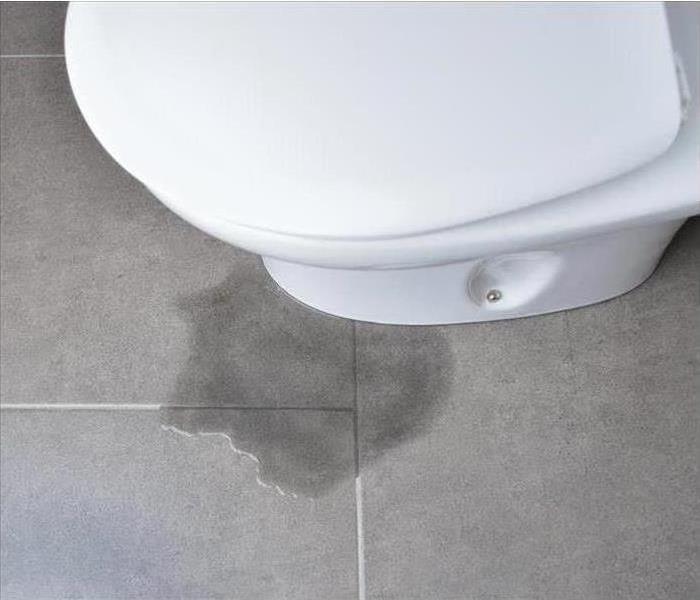 Leaking toilet in Salt Lake City, UT.
Leaking toilet in Salt Lake City, UT.
Although most commodes last for decades, they do need to be updated every now and then. If you have a leaking toilet in your home in Salt Lake City, UT, it might be time to replace it. Here are the steps to take to make this process as easy as possible.
3 Steps for Replacing a Leaking Toilet
1. Disconnect the Water Supply
Whether you are doing a toilet repair or installing a new one, never try to do work on a leaking toilet without disconnecting the water supply. This can lead to a large amount of standing water in your bathroom. In order to disconnect the water-supply tube you must loosen the compression nut on the shutoff valve.
2. Remove the Old Toilet
Depending on how long the old toilet has been in place, it may be stuck to the flooring. In order to remove it, you will need to unscrew any bolts and then gently rock it back and forth until it comes off the floor. Typically, there is a wax seal holding it in place, so you will need to break this before it will come off completely. If you are having trouble removing it yourself, you may want to call a professional to come help.
3. Install the New Toilet
Before you install the new toilet, you will need to get the area cleaned up, and remove any excess wax from the gasket. When you put the new one in place, make sure it is properly aligned. You can then secure it with the bolts. Some people choose to use caulk around the base to protect against mold growth. You should check with your building department to see if this is required in your area.
If you feel uncomfortable replacing the leaking toilet yourself, you should consider calling a water damage company in Salt Lake City, UT, to help you. They may also be able to work with you on the cleanup and check the extent of the damage. This may prevent larger or future issues from occurring.
3 Steps To Stop a Toilet From Overflowing
9/8/2022 (Permalink)
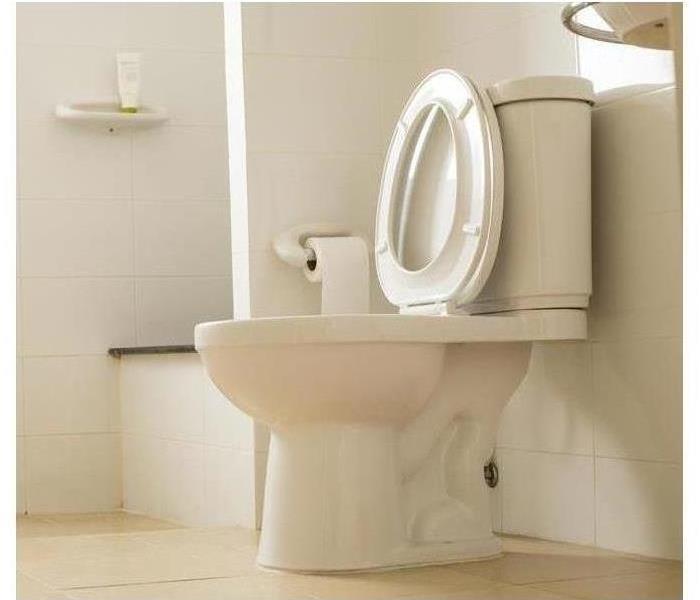 If you need to replace your toilet, contact a water damage mitigation and restoration company.
If you need to replace your toilet, contact a water damage mitigation and restoration company.
A drain line blockage can result in a flooded toilet. Homeowners can take three steps to stop a toilet from overflowing and limit the extent of sewer damage at a residence in Salt Lake City, UT.
Steps To Stop a Toilet From Overflowing
1. Contain Damage
Contaminated water can cause major water damage. If this water sinks into carpet or porous building materials such as drywall, these materials will likely need to be torn out and replaced. Use towels or a mop to stop the spread of sewage backup.
2. Use a Plunger or Snake
Once a homeowner has taken measures to try to stop the spread of sewer damage, he or she should address the cause of the problem. If the backup is due to a minor clog close to the floor drain, plunging a toilet may be enough to clear the clog and stop the overflow.
If the clog is more severe, insert an auger or snake into the toilet. Some augers have hand cranks while others can be attached to a power drill. It may be more effective to remove the toilet and snake the floor drain directly. You will need to use specialized tools and remove water from the bowl and tank or use a solidifying gel. Clear deeper clogs by snaking the drain cleanout in a basement or crawlspace.
3. Contact a Plumber
Calling a plumber can be easier than removing a toilet or dealing with a drain cleanout. If you do not have a snake or the skill or tools necessary to attempt advanced plumbing techniques, a trained professional is your best bet. If the problem originates in a municipal main, contact a sewage company.
If a flooded toilet causes extensive sewer damage, a homeowner should contact a water damage mitigation and restoration company located in Salt Lake City, UT. Experts can remove damaged materials, promote drying to prevent mold and restore the affected area.
3 Tips for Fixing a Flooded Basement
8/11/2022 (Permalink)
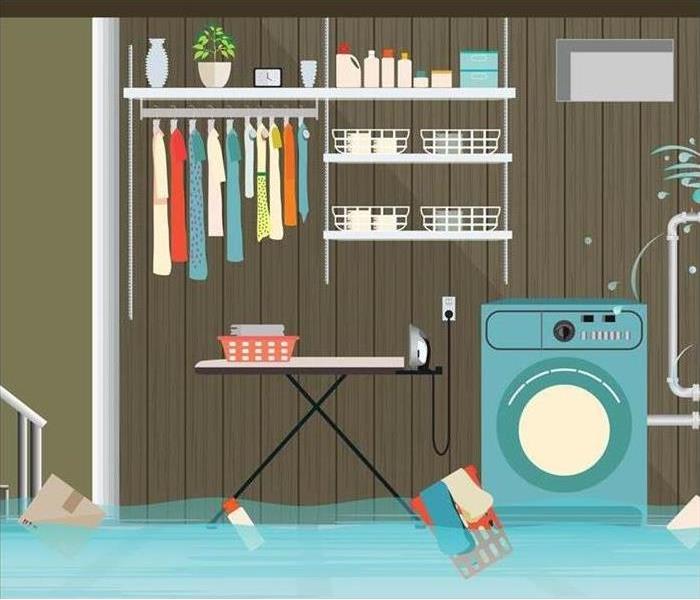 A flood in your basement can result in serious water damage.
A flood in your basement can result in serious water damage.
A basement flood can be a frustrating problem to deal with. If your home has a basement, it is important to familiarize yourself with what steps you can take to fix a flooded basement before a flood occurs. These three tips can help.
Tips for Fixing a Flooded Basement
- Remove the Water Before You Go in
Many basements have electrical appliances, wiring, and electrical panels that can create an electrocution hazard in a flooded basement. If you are dealing with a shallow flood, and you can access the service panel to turn off the electric circuits in the basement without going into the water, you may be able to remove the water using a hose from a shop vac on an upper floor. However, if the water level is above electrical outlets, it is best to call the fire department, rent a heavy-duty gas-engine pump or contact a water remediation company in Salt Lake City, UT, to assist you.
- Don't Try To Save Your Flooded Electrical Items and Appliances
The Gas Appliance Manufacturers Association and the National Electrical Manufacturers Association recommend replacing any mechanical or electrical equipment that has been exposed to a basement flood. Any fixtures, outlets, switches, wiring, electrical motors or appliances that have been exposed to flood water should be removed and discarded, rather than repaired. Check with your insurance professional if you need clarification about whether your insurance coverage will cover replacement versus repair costs for damaged items.
- Take Preventative Measures
Once you get your basement restored, take steps to prevent flooding from occurring again. Adding foundation drains, a generator to keep your sump pump operating during a power outage or a backup sump pump can help keep water out of your basement.
A basement flood can result in serious water damage to your home. These three tips can help you restore your home to preloss condition and prevent future problems from occurring.
Got a Sewer Backup? Get Professional Cleanup Help
6/17/2022 (Permalink)
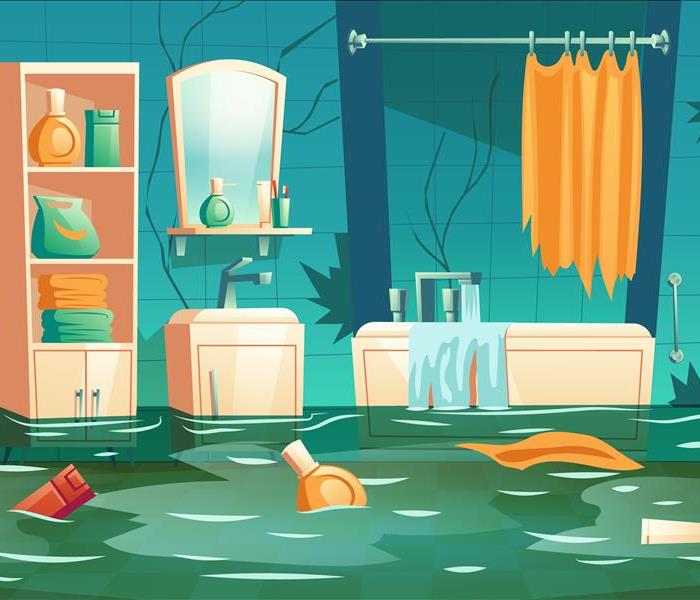 Got a Sewer Backup? Just call Our Specialists!
Got a Sewer Backup? Just call Our Specialists!
As a homeowner in Park City, UT, you want your home to be a safe and welcoming place. If you come into find the sewer has backed up, it means black water is seeping into the porous materials in the home and potentially spreading. Sewer cleanup requires extra attention to safety, which is why it’s best to call a water damage and restoration company to handle the mess.
Important Steps in the Cleanup Process
Sewer Backup Cleanup Process
Black water, classified as Category 3 by the IICRC, means that there are potential contaminants, bacteria, chemicals and microorganisms lurking within it. Even a flooded toilet may be in this category, so it’s important to not just dive right in.
Sewer Cleanup Process
When you hire a professional company, you get peace of mind that the entire problem will be handled by one trusted company. Trained and certified professionals will have the expertise, safety gear and industry-grade tools to get your home back to like new. While every situation has different degrees of severity, the cleanup process typically involves the following steps.
- Containment: Containing the affected area is the first vital step. This will help ensure that secondary damage doesn’t spread to other areas.
- Extraction: Standing water and waste will be extracted using high-grade pumps and other tools. The waste and contaminated water will be properly disposed of. Water-logged belongings will also be removed and taken off-site to be inspected for salvageability.
- Dry Out: Air dryers and movers, along with dehumidifiers, will be used to thoroughly dry the area.
- Clean, Sanitize, Deodorize: After the area is dry, the real cleaning process begins. An array of industry-recommended cleaning methods will be used to ensure peace of mind.
- Restoration: The final, and often longest step, involves restoring the property to preloss condition. This may include replacing drywall, carpeting, flooring and other structural components depending on the degree of damage.
Prevention Tips
Once you have dealt with a sewer issue, you don’t want a repeat situation happening. While there may not be much a homeowner can do if it was due to a city sewer issue, there are ways to minimize the risk in regard to your sewer line.
If it’s been a while since you have had your plumbing inspected, now is a perfect time. A professional plumber will inspect the valves and pipes to ensure they are working properly and have the know-how to detect potential problems.
The easiest way to keep your sewer working right is to practice good habits. Avoid flushing chemical products or any items other than waste and toilet paper down the drain. In the kitchen, ensure that grease is being properly thrown away and not going down the drain. This causes a buildup in the pipes that will eventually affect the main sewer.
While trees add to a property’s aesthetic, know where your sewer pipes are before planting. Tree roots will quickly make their way through older pipes, causing an eventual clog or collapse.
Sewer cleanup is a messy job and one that requires adhering to strict safety protocols. Instead of dealing with it on your own, it's best to consider hiring a professional to handle the job from beginning to end.
What To Know About Making a Residential Water Damage Claim
4/9/2022 (Permalink)
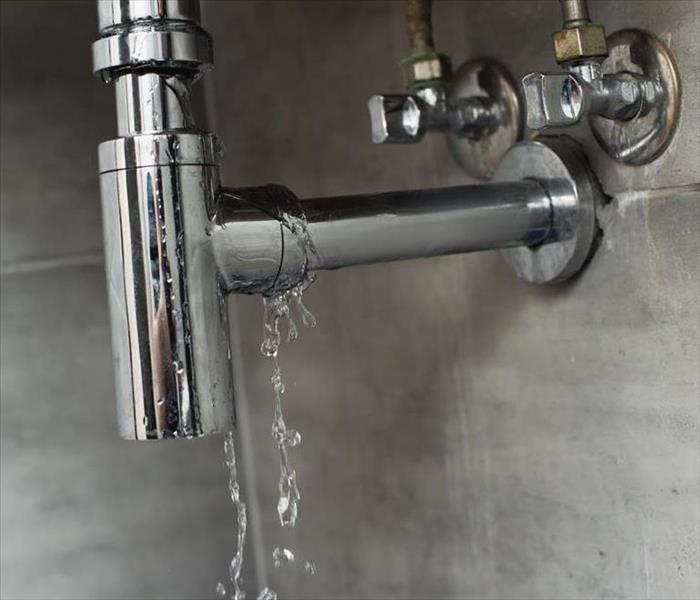 Know More about Residential Water Damage Claims by Following our Tips.
Know More about Residential Water Damage Claims by Following our Tips.
Making a water damage claim for your home can be a stressful experience. That is because homeowners' insurance policies are often confusing. Typically, damage caused by emergency situations, such as bursting pipes, is included in your policy. Other types of damage that may be covered include:
- Sewer backup
- Floods
- Storms
- Overflow
Yet even a robust policy does not cover all kinds of damage. Here are some things you should know before making an insurance claim.
When Is Water Damage Covered by Insurance?
Your insurance policy should cover a sudden and accidental discharge of water in your Salt Lake City, UT, home. However, most policies exclude coverage for gradual damage that occurs over an extended period.
Over time, parts of your home will experience wear and tear. This could result in water damaging various parts of the house. For instance, basement cracks could cause liquid to seep into the lower level of your home. A leaky pipe could also lead to a buildup of water inside your walls.
Insurance companies believe that you need to take reasonable steps to care for your home. That means inspecting the property regularly and fixing any issues right away. If your house suffers gradual damage, the insurance company will assume that you were negligent in your maintenance of the home and will likely deny your claim. You will then have to pay for water restoration services yourself.
Still, even this general rule has some exceptions. You may have to pay to replace or fix broken pipe yourself if the harm to the pipe occurred over time. However, the insurer may still cover any resulting damage that occurred as a result of the break.
Another common yet complicated situation occurs when a tree falls onto a roof and creates a hole. Your insurance provider will likely cover the costs of fixing the hole and addressing any damage caused by the water entering your home through the hole.
Yet what happens if you notice new water or mold damage near the hole months after the repairs have been completed? In this case, your insurer may still cover this additional harm if it was also caused by the original roof hole.
In general, mold is not covered by home insurance policies. Yet you may have coverage if the mold results from bursting pipes or another covered peril. Ask your insurance broker if it is possible to add mold coverage to your policy.
How Can You Decrease the Chances of Your Claim Being Denied?
There are several things you can do to prevent the denial of your water insurance claim. First, make sure to purchase a policy that addresses all of your needs. Do not be afraid to ask about any add-ons, such as mold coverage.
Performing timely repairs of your home is important, as well. Your claim will likely be denied if the provider determines that you have not been taking care of your property. Keep records of all repairs that you or a third party has performed over the years.
While damage caused by bursting pipes is often covered by insurance, your provider may reject other water-related claims. By performing regular maintenance on your home, you should increase the odds of your claim being accepted.
How To Repair a Leaking Faucet
11/24/2021 (Permalink)
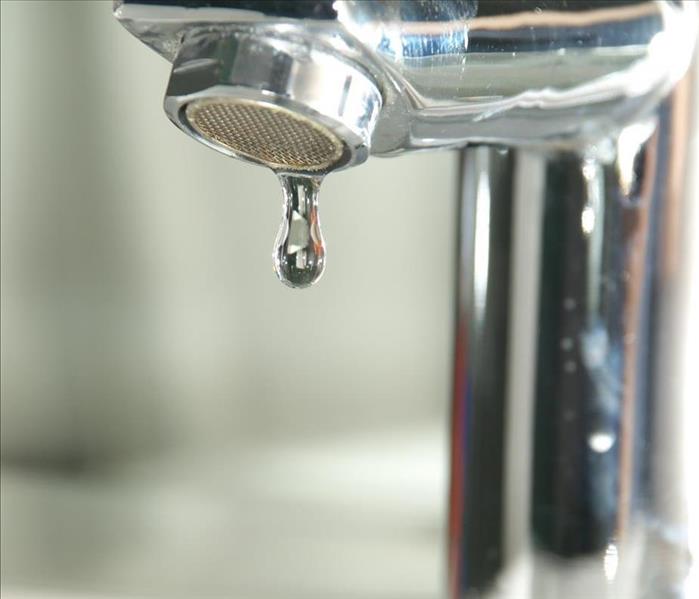 A leaking faucet can lead to water and mold damage in your Salt Lake City, UT home.
A leaking faucet can lead to water and mold damage in your Salt Lake City, UT home.
When your home is quiet and you suddenly hear the quiet sound of a leaking faucet, it's often the prelude to another home maintenance chore. Don't postpone this repair, though; that little drip can add up to gallons of wasted water and an increased Salt Lake City, UT, water bill.
5 Steps of Leaking Faucet Repair
Here are the steps you can take to fix the leak before contacting a water and mold cleanup and repair crew to address any damage:
1. Turn Off the Water
Start by looking underneath the sink. There should be pipes running along the wall with a handle for shutting off the water. Turn the handle clockwise. Once you believe the water is off, turn the faucet on in the sink to be sure. Next, plug the sink to prevent losing any hardware down the drain.
2. Determine the Type of Faucet
There are four common types of faucets: compression, ball, cartridge, and ceramic disk. The compression faucet has separate handles for hot and cold water, so it is easy to identify. You may need to disassemble the faucet to determine the other types of mechanisms. The ball faucet has a ball bearing inside the faucet. The cartridge and ceramic disk faucets have, respectively, a cartridge and ceramic disk within the faucet.
3. Gather Your Tools
Before you start taking the faucet apart, gather the supplies you'll need. These include a bucket, some towels, and rags, an Allen wrench, an adjustable wrench, some needle nose pliers, slip joint pliers, and both flathead and Phillips screwdrivers. You will probably also need a faucet repair kit and some fresh O-ring seals. Make sure you have an area to lay the parts of the faucet, so they don't get lost.
4. Identify the Source of the Leak
Once you have taken the dripping faucet apart, look for a dried-out or worn rubber washer, a piece of broken hardware, or gaps between mechanisms. The specific steps for repairing or replacing parts vary by type of faucet. For example, repairs to a cartridge faucet often involve cutting out old O-rings and using a plumber's grease when installing new rings. In a compression faucet, you can generally pull the washer out; however, you do need to have the exact match for a good repair. You can usually find the specifics for your leaking faucet online or at your local hardware store.
5. Reassemble the Faucet
After you've replaced the damaged components, put the faucet back together. If you're not sure, refer to the instructions on the repair kit or use an online how-to video. Don't put your supplies away, however, until you have tested the faucet. There shouldn't be any drips from the faucet after a successfully fixed leak.
Contact Professionals To Prevent Mold
After completing your leaking faucet repair, it's important to contact mold and water damage professionals. It doesn't take long for a small amount of hidden moisture to develop into a thriving mold colony. You may not spot any mold right now, but when you can see or smell it, the problem has already become significant. Remember that prevention and quick action is the best way to limit the expense of mold remediation.
Black Mold and Secondary Water Damage
10/6/2021 (Permalink)
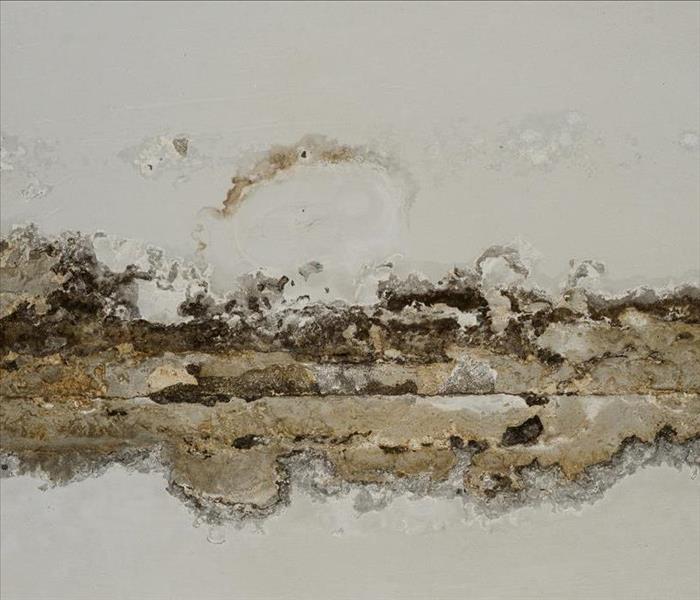 Water damage in your Park City, UT building leads to black mold and further damage.
Water damage in your Park City, UT building leads to black mold and further damage.
An emergency pipe burst or trouble along the sewer line can quickly put the brakes on your daily operations. Your quick efforts to deal with the source of trouble, to remove the water, and to thoroughly dry your facility can prevent a lot of further problems. Unfortunately, it is possible for water to soak into carpeting or drywall and for humidity to build-up, allowing for the growth of black mold and other forms of mildew.
Dealing With Black Mold and Other Damage
The first step in tackling secondary damage from any type of water leak or flooding is understanding the problem. Learn as much as you can about the types of damage you can expect:
- Mold growth
- Rotting materials
- Peeling vinyl and paint
- Warped wood
- Compromised electrical wiring
- Corrosion and rust
As you come to fully understand the havoc caused by hidden pockets of moisture and high humidity, you're better prepared to aggressively target those problem areas.
Understanding the Causes of Further Damage
One of the main reasons properties suffer from black mold and other forms of damage are that flooding, leaks, or spills weren't properly mitigated the first time around. Certified cleanup and mitigation professionals are trained to prevent secondary harm, protect your building from lasting damage, and save you a lot of money in ongoing repair costs.
As a property owner, you may be a fastidious cleaner with a determination to properly repair and clean your facility. However, there are several areas where moisture builds without giving notice of the trouble brewing:
- Humidity buildup in the air conditioner
- Damaged appliances with hidden leaks
- Hidden moisture beneath or behind surfaces
It isn't uncommon for property owners to thoroughly clean and dry their buildings, only to discover later on that damage, such as mold growth
Taking Action Immediately
It doesn't take long for water to cause a lot of expensive damage. It is vital that you act immediately for the protection of your building. This means shutting off the main source of water, contacting cleanup crews right away, and getting all available hands involved in the cleanup. If it's possible to remove carpets from the floor, you may prevent an expensive loss of flooring.
Avoiding Secondary Problems
In addition to hiring professionals to help you recover from water damage, there are steps you can take to prevent further trouble. Once you've dealt with the immediate flow of water, open doors and windows to provide thorough ventilation. Remove water and water-logged furniture, equipment, and belongings as quickly as possible. If it's safe to use the electricity in your building, set up fans in the affected area. Be sure that there's a consistent flow of air through unaffected rooms so that humidity doesn't build up and cause new damage.
For the best results, choose a Park City, UT, professional company to deal with water damage before your experience any type of trouble. This proactive step ensures that you or your employees know who to call, so professionals arrive as soon as possible. The better you understand black mold and other secondary harm, the better able you'll be to take prompt action and avoid a lot of expensive damage.
How Do I Make a Water Damage Insurance Claim?
9/16/2021 (Permalink)
 Filing an insurance claim form correctly is essential to get your Park City, UT home restored faster.
Filing an insurance claim form correctly is essential to get your Park City, UT home restored faster.
Water damage is one of the most common reasons homeowners file an insurance claim. To get your claim processed quickly, it is helpful to familiarize yourself with the claims process before you need to make a claim.
How To File a Homeowner's Claim
Filing a homeowner's claim is a multi-step process. Proceeding through the steps in order will help you make sure you don't forget to do anything.
1. Read Your Policy
Your policy should explain what your responsibilities are and what types of damage are covered by your policy. This is particularly important for water damage claims, because most homeowner's policies cover water damage from sudden and accidental discharges, such as a pipe burst, but exclude damage from a flood.
2. Mitigate Your Damage
Most insurance policies require homeowners to mitigate their damages. This means that if there are reasonable steps you can take to prevent additional damage from occurring while you are waiting to get the initial damage repaired, you are expected to take those steps. An example is shutting off the water to your home when you have a leaking pipe. If you have to spend any money to make temporary repairs, save your receipts. Your insurance policy may cover these costs.
3. Contact Your Insurance Company
Call your insurance agent or the claims office of your insurance company as soon as possible to begin the process of filing your insurance claim. Ask any questions you have about your coverage and deductible. Find out how long it will be before repairs can begin. Ask if you need to get an estimate done or if the insurance company will be sending someone out. Drying your property out promptly is important, so you may want to inquire about hiring a water remediation company in Park City, UT, to begin that process.
4. Complete Claim Forms and Other Paperwork
Your insurance company may mail your forms or allow you to complete them online. It may also ask you to submit other documentation. Return the requested materials as soon as possible. The longer you take to furnish the requested documentation, the longer it will take to process your claim.
5. Prepare for the Insurance Adjuster
In most cases, your insurance company will send an insurance adjuster to inspect your home and estimate the amount of damage. Take photographs of your damaged property and make an inventory of everything that was damaged. Gather together any receipts or other documentation that proves the value of your damaged property.
6. Keep Your Receipts for Relocation Expenses
If your home is uninhabitable because of the damage, keep your receipts for the cost of hotel rooms or rent for the period of time you are unable to live in your home. You may also be reimbursed for other additional living expenses, so keep the receipts for anything you had to spend money on because you were unable to occupy your home.
Filing an insurance claim for water damage can sometimes be confusing, but your insurance professional should be able to answer any questions that you have. Promptly and correctly filing your claim is critical for getting your home restored as quickly as possible.
Confront the Damage From a Flooded Toilet
8/11/2021 (Permalink)
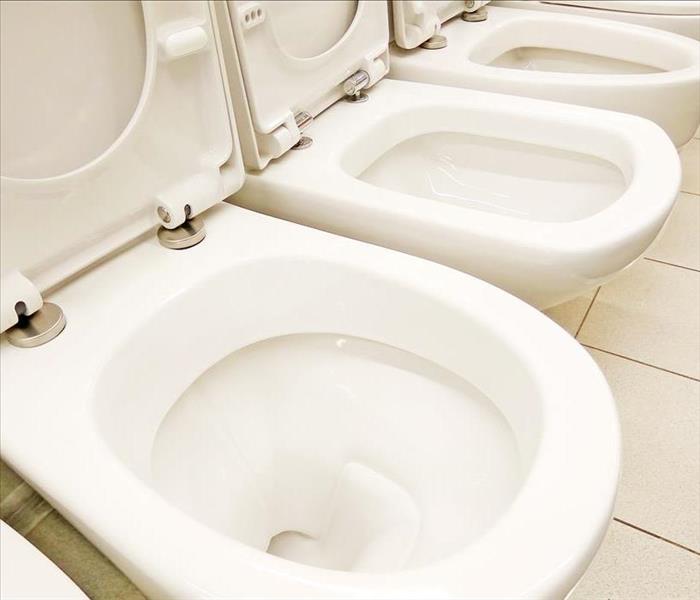 The damage caused for a flooded toilet in your business in Salt Lake City, UT, must require professional help.
The damage caused for a flooded toilet in your business in Salt Lake City, UT, must require professional help.
The sewer damage that results when a flooded toilet overflows throughout your Salt Lake City, UT, a business can quickly add up to a lot of money. The good news is that your commercial property insurance policy probably covers a lot of the damage. With this in mind, it's important that you know which steps you can take yourself and which work should be left to professionals.
Take These Steps Immediately
As soon as you notice the flooded toilet, you need to complete a few vital steps:
Turn off the water. You can do this by lifting the float inside the toilet tank, turn off the valve at the back of the toilet, or shut off the water at the building's water main.
Mop up as much water as possible. It doesn't take long for water to cause expensive damage to your building.
Clean up organic matter. This includes dirt and other substances that may have been in the toilet. You must be aware of the dangers of black water, at this point. The bacteria from waste in the water can have serious side effects, especially during extended contact.
Contact sewer damage cleanup and remediation professionals. In addition to handling any black water and other dangerous contaminants, these experts may point out potential areas of mold growth and help you avoid future water damage.
If the flooding is confined to a small area, you may clear the clog and clean up the mess on your own. However, if there's any possibility that you're dealing with anything other than clean water, you're better off turning the job over to professionals. Depending on how widespread the damage extends, you may need to take additional steps, such as contacting the sewage company.
Respond to Further Damage
If water from the toilet has traveled from one floor of the building to another, it may be necessary for cleanup crews to tackle some demolition and reconstruction. For example, flooring and ceiling materials may need to be removed, disposed of appropriately, and then replaced. Wet materials, including drywall and insulation, may need to be thoroughly dried out, disinfected, or replaced. Your insurance company may require you to work with damage cleanup and remediation professionals.
Prevent Mold Growth and Damage
Mold is a common concern after any type of water damage. High levels of moisture can cause unseen pockets of humidity that provide an ideal breeding ground for mold spores. Unfortunately, within just a couple of days, there may be enough mold growth to encourage the spread of multiple colonies. If you don't know what to look for, this trouble could continue unseen until serious damage has been done. Cleanup technicians may test for mold and take steps to clean up and prevent spread.
Avoid More Unpleasantness
Cleaning up after an overflowing toilet isn't one of the things that most business professionals are excited about. However, when sewer damage happens, these simple steps can help keep further damage under control. Your quick response and the work of professionals is the best way to limit further harm and get your business back underway.
Out with the Old: Changing your Pipes
8/4/2021 (Permalink)
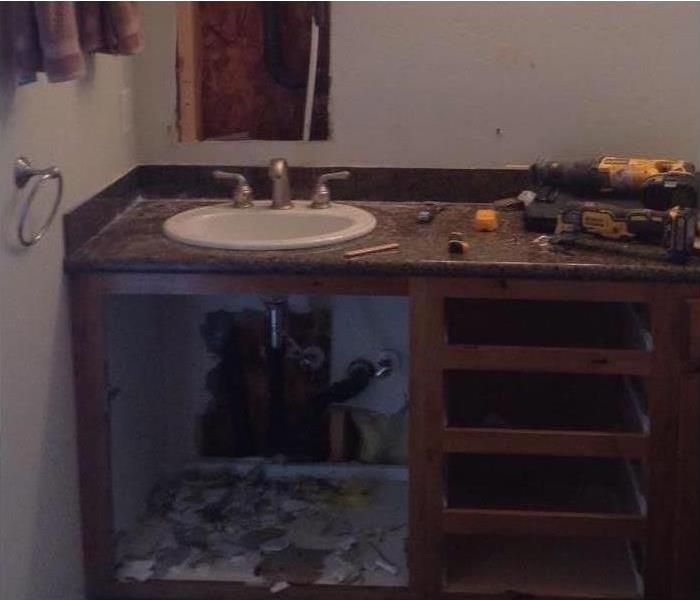 Broken pipe causing water loss in a Park City, UT home
Broken pipe causing water loss in a Park City, UT home
From the 1970s to the 1990s, a specific sort of pipe was used in a lot of commercial plumbing. Polybutylene was thought to be the pipe of the future because it was inexpensive to make and easy to install. After a few years, however, those buildings started having plumbing problems. These pipes are not used in Park City, UT, today because they inevitably wear out, and they cause significant water damage when they do.
Here are some reasons these pipes must be replaced if they are part of your building's plumbing.
1. Exposure to treated water makes it brittle. One of the reasons this particular piping does not work for plumbing is that the water itself destroys the pipe. The chlorine and antibacterial chemicals used to make drinking water safe make the polybutylene pipes brittle and prone to breakage. Over time, they cannot be fixed. They must be replaced.
2. Disintegrating parts get stuck in the water. Another startling effect of this type of piping is that as it disintegrates, it flakes off and leaches chemicals into the water supply. New plumbing made from safer materials is a necessary upgrade.
3. It costs more to maintain than to replace. Replacing these pipes has a comparable cost to replace the carpet in your house. The piping change isn't inexpensive, but neither are all the costs from having to hire water remediation experts to clean up every time you have water damage.
4. It drives down the resale value of your building. Because this piping causes so many problems, it needs to be fixed before you put your property on the market. Most realtors won't even show a commercial property that still has old pipes in it. The pipes must be replaced before the building is likely to sell.
If your commercial building seems to have more water damage problems than it usually does, polybutylene pipes may be the culprit. Have the pipes replaced to avoid additional repair expenses.
4 Advantages of an Electronic Claims Service
6/28/2021 (Permalink)
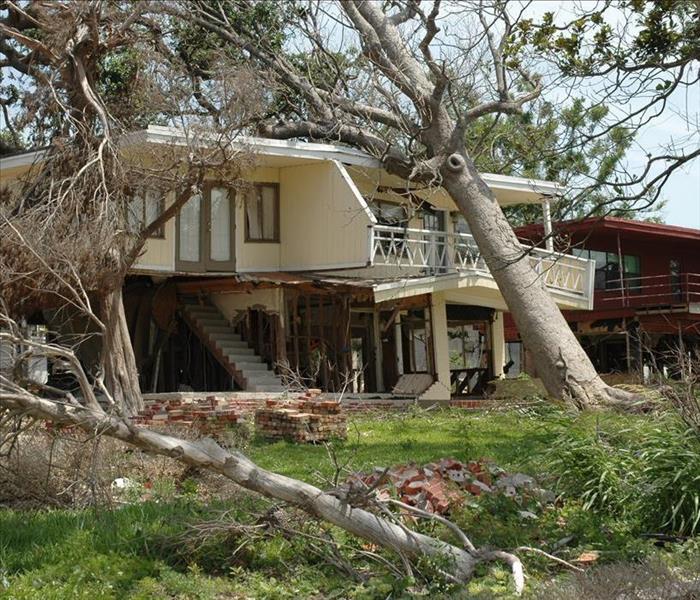 Utilizing an Electronic Claims Service has its benefits.
Utilizing an Electronic Claims Service has its benefits.
When your home is hit by a disaster in Salt Lake City, UT, immediate action is necessary to minimize loss. First, you must call to get your insurance agent to inspect the damage so that you can file an insurance claim. Then, restoration can finally get underway to minimize loss. These days, with the help of SERVPRO electronic claims service, the process is becoming increasingly faster and more efficient, allowing for numerous benefits.
Benefits of an Electronic Claims Service
1. All the Data Is Saved in One Secure Location
Every stage of the claims process is documented and placed on the electronic claims service site. These days, there's very minimal, if any, sorting through piles of paperwork and looking on multiple company sites. Electronic claims services enable professionals to obtain all your damage information from one website. They can also access it from any computer or mobile device, whether in the office or the field.
2. The Information Is Updated and Accessed in Real-Time
As soon as a professional uploads information to the database, it's available for others to access. This enables a smoother insurance claim and restoration process with less downtime.
3. The Agents, Adjusters and Service Providers Have Access
From insurance agents and adjusters to damage restoration specialists, everyone can access your information about the entire ongoing process at all times. The service also provides professionals access to nationwide collected data from various types of claims to make sure you receive fair costs and compensation.
4. Communication Is Made Easier for Everyone
Property owners, insurance agents, adjusters and service providers have an easy line of communication throughout the entire process. Everyone involved can simply go to the account and interact with one another.
An electronic claims service makes filing an insurance claim a simple, efficient procedure from start to finish. Whatever type of disaster your home endures, this technology is invaluable. The damage to homes is mitigated and restored faster than ever.
Alternatives to Using Chemical Drain Cleaners
4/16/2021 (Permalink)
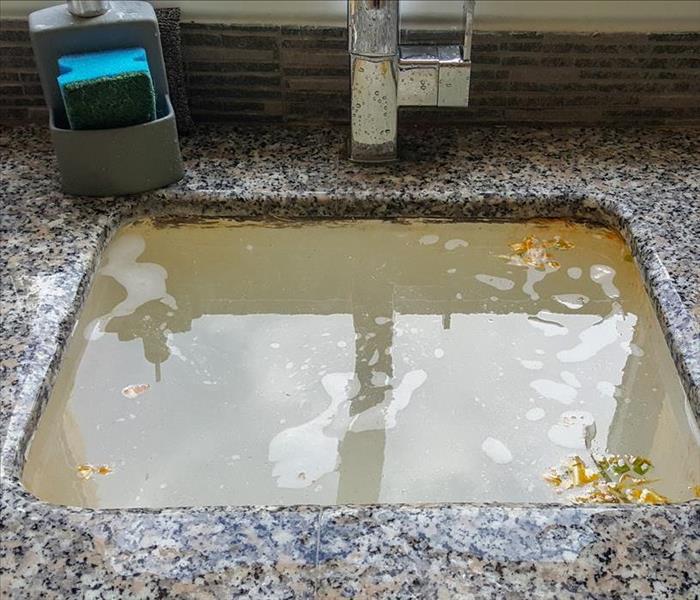 Clogged drains can cause damage to your home.
Clogged drains can cause damage to your home.
A chemical drain cleaner is a powerful tool when it is used correctly in a clogged drain. However, they can cause damage in the wrong situation.
The chemical cleaners produce heat, and this can lead to damage:
- Weakened older pipes may develop cracks and leaks.
- Plastic pipes may become warped and misshapen.
- If the drain is completely blocked, the chemicals will sit in one place and eat through the pipes even if they are relatively new.
In addition to these risks, the chemicals could harm you and your environment:
The chemicals in drain and sewage cleaning products are toxic and are generally more damaging to skin than to plastic and metal pipes.
Even breathing the fumes could lead to irritation.
Before you treat your drain with chemicals, consider the risk of damage to the piping system. It may be worth your time to reach out to water damage cleanup and repair professionals.
How Chemical Cleaners Work
If you understand how drain cleaners work, you'll be better prepared to make the right decision about whether to use them in a clogged drain. There are three types of chemical cleaners:
Although the makeup of these products are different, they all cause a chemical reaction, either adding electrons or removing them from the gunk in your pipes. However, as the fats, oils, and grease break away from the clog, they simply move further down the drain and end up forming a new clog deeper in your pipes.
Alternatives to Drain Chemicals
There are two methods you could try before pouring chemicals down your drain. First, you can try manually clearing the clog. Secondly, you could try a non-toxic enzyme cleaner that introduces living bacteria or enzymes into the pipes. This option may take 24 hours or so before you see results.
For the Best Results
Professional cleaners are some of the best Salt Lake City, UT, professionals to address your clogged drain issue. If you have already put a chemical in the drain, be sure to alert the technicians before they start working.
Where to Start when Restoring a Flooded Basement
1/18/2021 (Permalink)
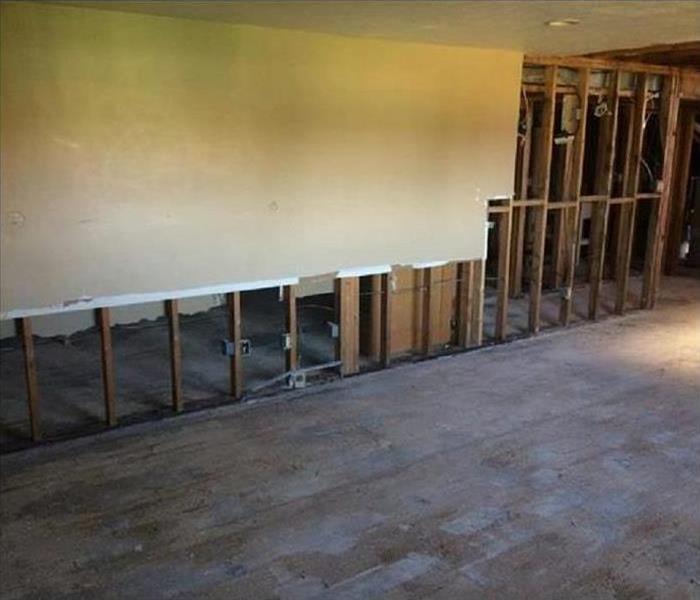 SERVPRO performed flood cuts to remove all water damaged materials in Park City, UT.
SERVPRO performed flood cuts to remove all water damaged materials in Park City, UT.
When flood season comes to Park City, UT, it can hit hard. The impact of the excess water is most likely to be felt by homeowners in the form of basement flood damage. Whether the sump pump failed or just couldn't keep up with the water flow, homeowners may be left scratching their heads. Feelings of where to start and what to do can be overwhelming. The following three steps may give some direction as to how to approach flood cleanup and prevention of future incidents.
3 Steps to Cleanup Flood Damage
- Remove Water
Before any repairs can be made, all of the water must be removed from the basement. Some people prefer to call a water removal and restoration company for assistance. Flooded basement water removal may look something like the following:
- Hiring an electrician to evaluate the risk of electric shock.
- Getting the sump pump up-and-running to remove sitting water.
- Using a shop vacuum to suck-up the last inch or so of water.
- Lifting carpet and using large fans to dry-out moisture.
- Sanitizing with warm water and disinfectant to prevent mold growth.
- Repair Damage
Once the area has been completely dried, repairs may be in order. Checking your home flood insurance coverage may be a good place to start. While salvaging some belongings may be an option, it is unwise to try to save anything which uses electricity or gas. If your gas furnace or electric outlets took on water in the flooding, replacement over repair is the safe route to go.
- Plan for Future Flood Prevention
Now that the basement is clean, dry and repairs are complete, it's time to plan ahead for the future. There is nothing worse than putting time and money into basement flood restoration only to have it ruined all over again. Consider the following preventative measures:
- Install a back-up pump.
- Create outside drainage for storm runoff.
- Buy a generator for use during a power outage.
Flooding in Park City, UT, is common. If a basement flood catches you by surprise, follow these three basic tips to get cleanup underway.





 24/7 Emergency Service
24/7 Emergency Service












